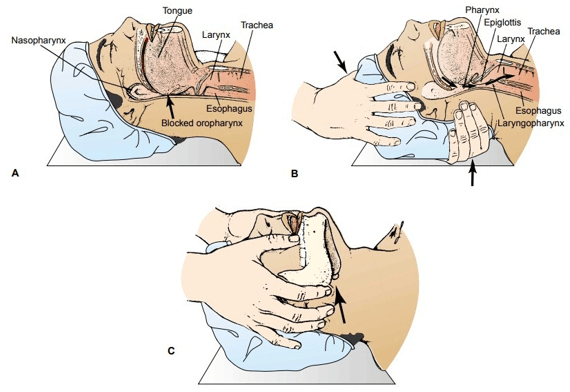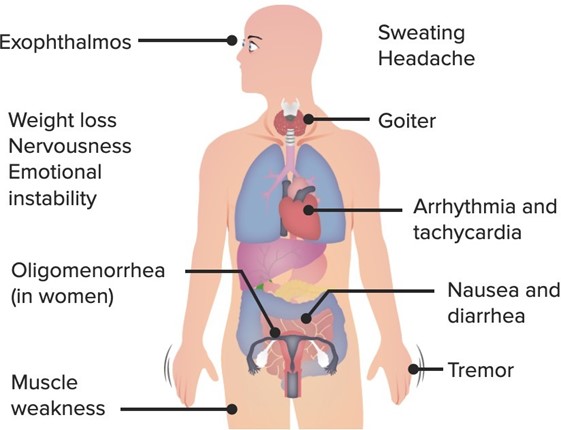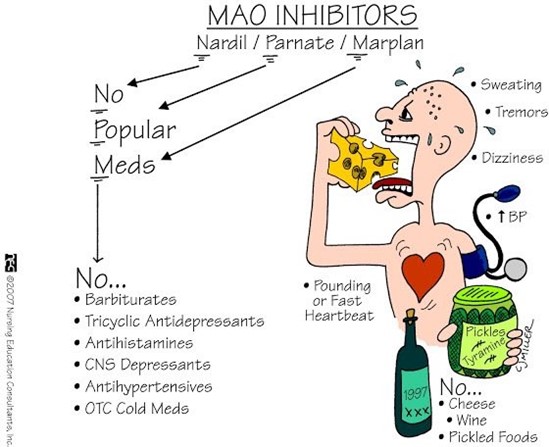A nurse is assisting with the care of a client in a PACU. Provider Prescriptions
1100:
Oxygen 2 to 5 L/min via nasal cannula to maintain oxygen saturation greater than 92%.
Which of the following actions should the nurse take during the management of oxygenation for this client? Select all that apply.
Place the client in the supine position.
Prepare to administer oxygen via Venturi face mask.
Add a humidifier to the oxygen device.
Encourage client to perform deep breathing exercises.
Examine the client's nail beds.
Correct Answer : C,D,E
When managing oxygenation for a client in a PACU, the nurse should take several actions. The nurse should add a humidifier to the oxygen device to help prevent dryness of the nasal passages¹.
The nurse should also encourage the client to perform deep breathing exercises to promote oxygenation¹.
Additionally, the nurse should examine the client's nail beds for signs of cyanosis, which can indicate inadequate oxygenation¹.

Nursing Test Bank
Naxlex Comprehensive Predictor Exams
Related Questions
Correct Answer is C
Explanation
Thyrotoxicosis refers to a state of excess thyroid hormone in the body, which can occur as a result of excessive levothyroxine dosage or other causes. Nervousness is a common symptom of thyrotoxicosis, characterized by an excessive or uncontrollable feeling of anxiety or restlessness. It is important for the client to report this symptom to the healthcare provider because it may indicate an imbalance in thyroid hormone levels and may require adjustment of the medication dosage.

Polyuria, which refers to increased urination, is not a specific symptom of thyrotoxicosis. It can occur due to various factors unrelated to thyroid function.
Pruritus, or itching, is not a common symptom of thyrotoxicosis. It may be associated with other conditions or causes.
Cough is not typically associated with thyrotoxicosis. It is more commonly related to respiratory or pulmonary conditions rather than thyroid dysfunction.
Correct Answer is B
Explanation
Tranylcypromine is a monoamine oxidase inhibitor (MAOI) medication used to treat depression. MAOIs inhibit the activity of the enzyme monoamine oxidase, which helps regulate the breakdown of certain neurotransmitters, including tyramine. Tyramine is typically broken down by monoamine oxidase, but when taking an MAOI, the enzyme's inhibition can lead to an excessive accumulation of tyramine in the body.
Tyramine-rich foods, such as aged cheeses, cured meats, and certain fermented or pickled foods, contain high levels of tyramine. Ingesting these foods while taking an MAOI can lead to a sudden release of stored norepinephrine, causing a hypertensive crisis.
Hypertension is a potentially serious adverse effect of MAOI therapy combined with tyramine-rich food ingestion. Symptoms of a hypertensive crisis can include severe headache, palpitations, chest pain, sweating, blurred vision, and in severe cases, it can lead to stroke or other cardiovascular complications.
Hematuria refers to the presence of blood in the urine and is not a known adverse effect of tranylcypromine or related to tyramine-rich food ingestion.
Tinnitus refers to the perception of ringing or noise in the ears and is not a known adverse effect of tranylcypromine or related to tyramine-rich food ingestion.
Hyperglycemia, or high blood sugar levels, is not a known adverse effect of tranylcypromine or related to tyramine-rich food ingestion. However, it's important to note that tranylcypromine may interact with certain diabetes medications, so it's essential to consider the client's overall medical history and potential drug interactions.

Whether you are a student looking to ace your exams or a practicing nurse seeking to enhance your expertise , our nursing education contents will empower you with the confidence and competence to make a difference in the lives of patients and become a respected leader in the healthcare field.
Visit Naxlex, invest in your future and unlock endless possibilities with our unparalleled nursing education contents today
Report Wrong Answer on the Current Question
Do you disagree with the answer? If yes, what is your expected answer? Explain.
Kindly be descriptive with the issue you are facing.
